M12 Globular Cluster
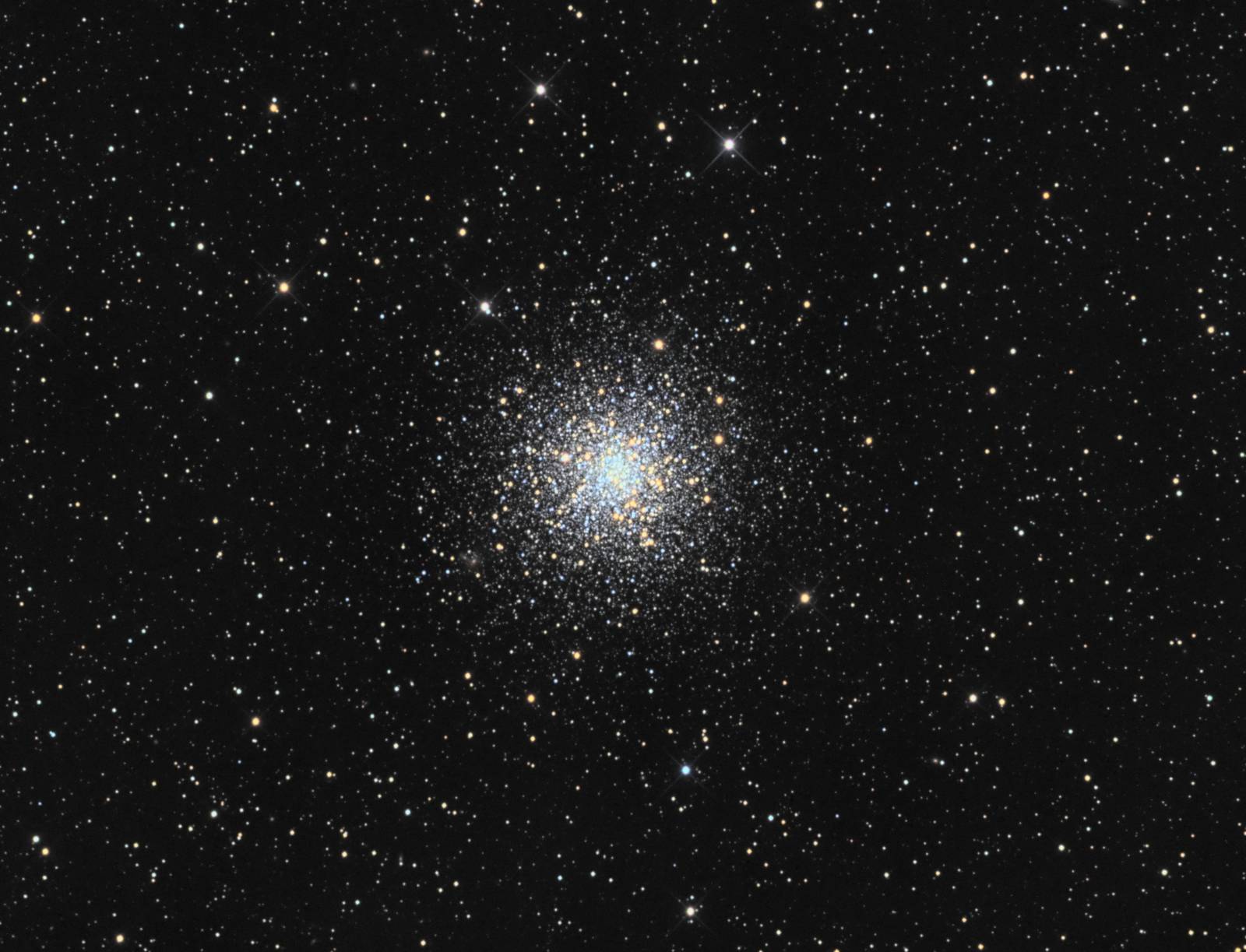 Click image for full size version
Click image for full size version
February 17, 2017
Published in June 2017 Sky & Telescope, and the June 2017 Journal of the Royal Astronomical Society of Canada
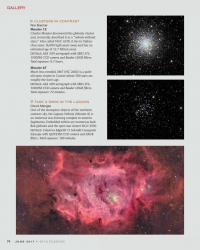
 I imaged this pretty globular cluster, M12, on June 4 and 5th, 2014. My birthday was june 5th, and the universe gave me a present in this image: in addition to the main object, there are some faint galaxies on the field. Coolest are the two in the halo around the 7:30 position, only one which is identified in the annotated image.
I imaged this pretty globular cluster, M12, on June 4 and 5th, 2014. My birthday was june 5th, and the universe gave me a present in this image: in addition to the main object, there are some faint galaxies on the field. Coolest are the two in the halo around the 7:30 position, only one which is identified in the annotated image.
Like most globular clusters, star colours in this image range very blue (the hottest stars) to red (the coolest). There are more than 150 of these objects forming part of the Milky Way galaxy, and other galaxies also have them. M12 has an apparent size a little larger than a half-Moon, and lies almost 16,000 light years from us. It’s true diameter is about 74 light years and it has about 87,000 times the Sun’s mass.
A previous version of this image, from 2014, was Astronomy Magazine Online Picture of the Day on June 4, 2015.
Tekkies:
SBIG STL-11000M camera, Baader LRGB filters, 10″ f/6.8 ASA astrograph, Paramount MX. Guided with STL-11000′s remote guide head using 80 mm f/6 refractor. Acquisition, guiding, calibration with Maxim-DL. Image registration, integration and processing in PixInsight. Shot from my SkyShed in Guelph, Ontario. No moon. Very good transparency and poor seeing throughout.
8x10m R, 7x10m G, 7x10m B, 22x15m L, all unbinned frames (total=8hr40m).
RGB
Creation and cleanup: L, R, G and B masters were cropped and processed separately with DBE. R, G and B were combined to make an RGB image which was processed with ColorCalibration.
Linear Noise Reduction: MultiscaleLinearTransform was used to reduce noise in the background areas. A Linear mask and the following Layer settings for threshold and strength were used: Layer 1: 3.0, 0.75 Layer 2: 2.5, 0.62 Layer 3: 2.0, 0.5 Layer 4: 0.5, 0.2, Layer 5: 0.5, 0.1.
Stretching: HistogramTransformation was applied to make a pleasing yet bright image. During stretching, it was noted that the colours were not properly balanced for the background, so this was adjusted manually using sliders for the individual colour channels, as well as the RGB/K slider. Colour as adjusted using PixelMath to blend the a* and b* channels of the image with the corresponding channels of the 2014 version.
Synthetic Luminance:
Creation and cleanup of SynthL: The cleaned up L, R, G and B masters were combined using the ImageIntegration tool (average, additive with scaling, noise evaluation, iterative K-sigma / biweight midvariance, no pixel rejection).
Linear Noise Reduction: MultiscaleLinearTransform was used to reduce noise in the background areas. A Linear mask and the following Layer settings for threshold and strength were used: Layer 1: 3.0, 0.75 Layer 2: 2.5, 0.62 Layer 3: 2.0, 0.5 Layer 4: 0.5, 0.2, Layer 5: 0.5, 0.1.
Stretching: HistogramTransformation was applied to make a pleasing yet bright image.
Nonlinear Noise Reduction: TGVDenoise was applied with a mask to protect stars. The image was re-stretched to reset the black point.
Combining SynthL with RGB:
The luminance channel of the RGB image was applied with LRGBCombine to make a SynthLRGB image. Colour noise reduction was used at default settings.
Final Processing of SynthLRGB:
Background and star brightness, contrast and saturation were adjusted in several iterations using Curves with masks as required. A star mask was applied and used to slightly soften the edges of the brighter stars in the halo of the cluster to avoid a “punched out” appearance.
Image scale is about 1.1 arc sec per pixel.


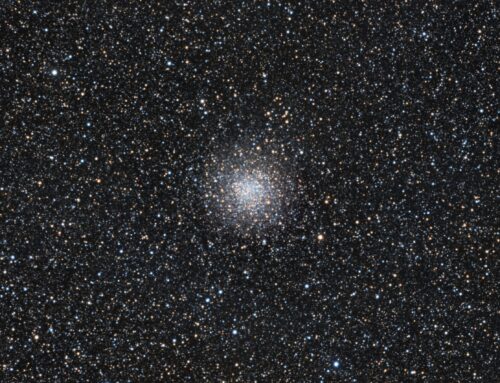

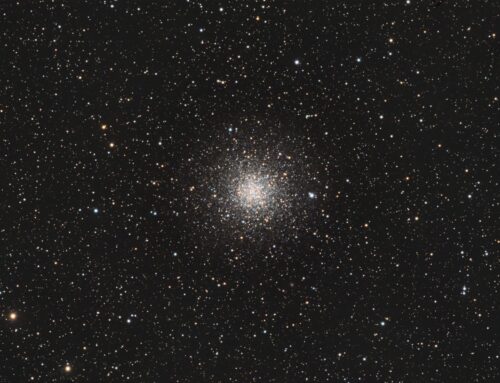
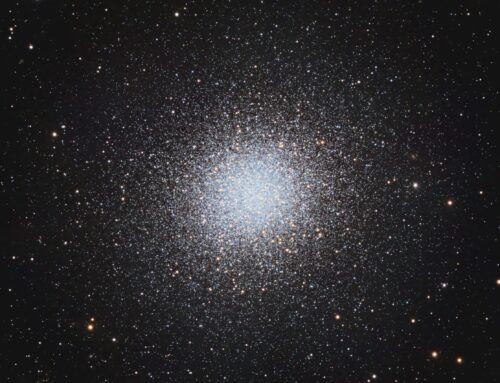
Leave A Comment